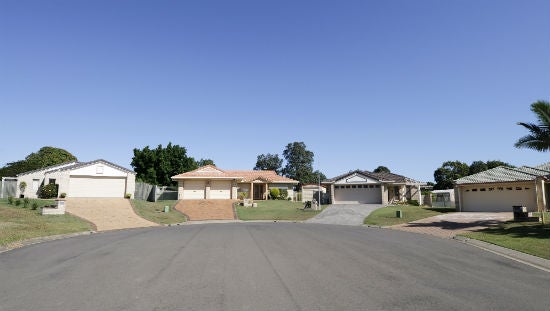But while you’re out hitting the pavements – or driveways – in search of home sweet home, you might be met with some unfamiliar terms. Turns out there is a bit more to picking a home than settling on an area, fixtures and a price range.
Spare a cup of sugar/ few hours to talk about the shared driveway?

If you’ve seen the show Neighbours at War, you’d know the relationship with those living in the houses next to you – and across from you – are pretty key. These relationships can become even more significant, depending on the type of land agreement your property has.

Here are some of the key property ownership types in New Zealand:
Freehold
If the property documents say the dwelling is on “freehold land”, this means that you own the land, as well as the building(s) on the site. So, if you want to add on a deck, for example, you will still need to get the usual council approvals, but you won’t need to get the neighbour’s permission. A freehold title can also be referred to as a “fee simple” title, this is the most common type of title in New Zealand, according to the New Zealand Law Society.
What to consider with a property on freehold land:
Freehold land gives the homeowner a certain amount of autonomy (budget permitting) when it comes to making renovations/extensions to the outside of the property. But, for this reason, you can often expect to pay more for a freehold title property than some of the other ownership types we will come to shortly.
Cross-lease property
A cross-lease type of ownership is common when there are multiple dwellings on a single piece of land/title. What that means is the owners of each property co-own the land and lease their own property, from each of the tenants in common. A plan that is attached to the cross-lease will show the outline of any buildings on the plan, known as a “flats plan”. It’s really important that a lawyer checks this plan, to see that the property (and any adaptations) match what is shown.
Conveyancing website Home Legal gives an example of what a cross-lease property type means for the owners:
Marty, Sarah, and Jason own three cross-leased properties: Flat A, Flat B, and Flat C, on 100 Star Street.
Marty, Sarah, and Jason together own all the land on 100 Star Street, with each of them having a one-third share in the fee simple estate of the land. This means that each of them owns one third of the whole land, and not any specific part of the land.
Marty, Sarah, and Jason (as a group) then lease out flats on parts of the land to each of themselves individually. The group leases Flat A to Marty, Flat B to Sarah, and Flat C to Jason. Each of these leases gives the owner of the flat exclusive rights to the use and enjoyment of that flat.
When Marty, Sarah, or Jason sells their property, they are actually selling their one-third interest in the underlying fee simple and their interest as lessee in the lease of their particular flat.
What to consider with a cross-lease title
Cross-lease properties will often be cheaper than a freehold section, as there is shared ownership of the land. That means you may be able to buy a property in one of your preferred suburbs, that you may not have been able to if you were sticking to a property with freehold land. However, if you do want to make renovations to the outside of your property, you will have to discuss this with any other owners who share the land. All owners also share common property, such as shared driveways and fences, and share responsibility for its maintenance. The cross-lease may also include written agreements that specify what the joint owners can and can’t do regarding the use of the land.
Leasehold land
Leasehold land means the owner of the house does not own the land that the property is on. The owner has to pay annual rent on the land, known as “ground rent” or “lease fee”. The fee is based on the land value and is normally fixed for a number of years, according to the Citizens Advice Bureau.
What to consider with leasehold land:
At the outset, a house built on leasehold land can seem appealing – it will generally come with a much cheaper initial price tag. But it’s really important to factor in the extra costs, both upfront and ongoing. With a leasehold land property, the owner has to pay a bond upfront, which guarantees them the right to live in the property for a specified number of years. The bond also allows the owner to make changes to the property, such as extensions. The bond is either partially or fully refunded if the owner sells the house and cancels the lease, the Citizens Advice Bureau states. Be mindful when it comes to getting a home loan, as well, the lender may not be prepared to lend as much as it would with a freehold land property.
Another disadvantage of such property is that the ground rent is reviewed every 7 – 27 years, and if the land value has risen substantially this can lead to an equally substantial increase in the ground rent.
Unit title
If you’re looking at a unit title property, what that means is that you would own a defined part of the building, such as an apartment, and that you share ownership of common areas, such as the lifts, lobbies or driveways.

What to consider with a unit-title property:
Buying a unit-title property is, like a cross-lease property, likely to be cheaper than buying a freehold property. But – and it’s a big but – there are ongoing costs to be aware of. When you purchase a unit-title property, you automatically become part of what’s known as a body corporate. The body corporate owns any common areas, such as a pool or gym, and also has rules about how you’re allowed to use your unit and these common areas. All unit title owners have to pay a body corporate fee for the management of these common areas. As the property owner, you do get to contribute to building decisions, by attending body corporate meetings, but you have to pay all your fees for your vote to be counted.
What’s in a name when it comes to home loans
While you’re out looking at all the different property types, you’ll also want to get familliar with the different types of home loans. For example, there are big differences between fixed and floating home loans, as well as pros and cons for both, depending on your situation.
You need to weigh up whether you want to take advantage of rate fluctuations by floating your mortgage, or whether you need the certainty of fixed monthly payments.
Fixing your home loan rate means you know exactly what you have to pay every month and there are no nasty surprises if rates go up in the meantime. This gives peace of mind to those on a fixed income who may have some difficulty stumping up extra cash at the whim of their lender.
Floating, on the other hand, allows you to play the market more. If rates go down, so do your repayments. However, the opposite is also true.
Canstar takes a closer look at the pros and cons of fixing and floating, in this guide, here. It’s also easy to compare current home loan rates, in between all that house hunting, with Canstar’s online comparison tables, available here.
Compare home loans with Canstar
In the meantime, happy house hunting!
Enjoy reading this article?
Sign up to receive more news like this straight to your inbox.
By subscribing you agree to the Canstar Privacy Policy
Main image credit. Shutterstock: Bella0728 –




Share this article